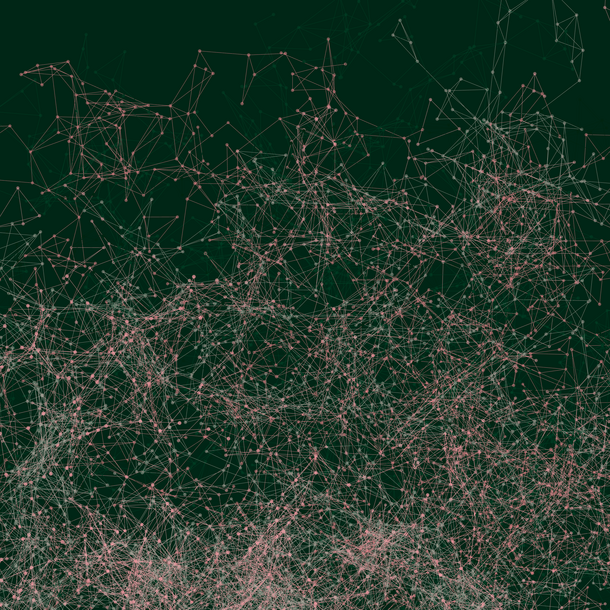Reactive Control and Adaptive Sampling using an Autonomous Underwater Vehicle
Doctoral Researcher:
Laura Mathieu, Alfred Wegener Institute - Helmholtz Centre for Polar and Marine Research, Bremerhaven, laura.mathieu@awi.de
Supervisors:
- Prof. Dr. Torsten Kanzow, Alfred Wegener Institute - Helmholtz Centre for Polar and Marine Research, Bremenhaven, torsten.kanzow@awi.de
- Prof. Dr. Ralf Bachmayer, University of Bremen, Faculty of Mathematics and Computer Science, MARUM – Center for Marine Environmental Sciences, bachmayer@uni-bremen.de
- Dr. Thorben Wulff, Alfred Wegener Institute - Helmholtz Centre for Polar and Marine Research, Bremerhaven, HGF – MPG Joint Research Group for Deep-Sea Ecology and Technology, Thorben.Wulff@awi.de
Location: Bremen/Bremerhaven
Disciplines: physical oceanography, computer science, robotics
Keywords: adaptive sampling, machine learning, autonomy
Motivation: Autonomous Underwater Vehicle Technology has become a field of growing importance in modern ocean research. Autonomous platforms such as AUVs and underwater gliders are able to collect significant amounts of data within a short period of time and provide an extremely detailed view on the investigated region. However, scientists still depend on careful pre-planning of vehicle sampling patterns as the vehicles lack situational and environmental awareness. Due to limitations in range and available energy of the vehicles, this inevitably leads to inefficient spatial coverage and lower than possible resolution in the area of interest. Also, this leaves it to the scientist to reveal the most interesting parts of its pre-programmed dive in a labor intense post operation process or even missing interesting features completely.
Applying online adaptive or reactive control techniques to the vehicle on-board guidance system will enable a vehicle to identify scientifically promising areas autonomously and selectively navigate into these areas. In addition to that, a flexible payload control software using adaptive sampling strategies can ensure the vehicle provides the best data quality possible. For this reason, the vehicle needs to verify, process and “interpret” its data from different sensing modalities in order to adjust for example the vehicle’s path or in other cases simply change the measurement frequency of certain sensors. To achieve his reliably and in a robust and tractable way it requires efficient data quality control, data fusion and analysis techniques to be implemented. A possible extension to this framework could be a minimalistic, reduced order on-board model for data interpretation.
Aim: Any of this is a challenge for a human operator with large computing capacity at hand. Therefore, the goal of this PhD project is, initially for a specific scientific case, to develop the algorithms that will enable an autonomous vehicle to have some situational awareness which in turn, together with a notion of the scientific mission objective will enable it to actively adapt its sensing scheme. The developed software needs to merge and process AUV housekeeping data and data provided by scientific sensors to interface with the vehicle’s control system. In addition to that, the software will interpret measurement data and adjust payload functions autonomously so that sampling rates will depend on the scientific value of a certain area.
Scientifically, the project aims at identifying and efficiently sampling ocean fronts (i.e. areas of strong flows induced by strong horizontal changes in ocean temperature and salinity). We have selected fronts as a worth-while show case, as they are of high scientific and economic relevance because they represent areas of pronounced biological activity (primary production).
As such ocean front in the Arctic and Southern Ocean will be foci of research linking physical and biological studies in the Topics. 2 and 6 in the upcoming POF4 program. At the same time, fronts represent narrow and short-lived features that have been notoriously difficult to monitor.
As a final step, the PhD candidate is expected to implement the algorithm into an AUV and conduct practical experiments at sea, in order to demonstrate the gain in efficiency in monitoring fronts using the techniques developed. In realizing this goal, an important step will be taken toward establishing techniques that will help us close critical data gaps and optimize data acquisition as part of an adaptive hierarchical monitoring of the ocean
Objectives: (1) Develop a methodology to provide the AUV with situational awareness, (2) develop an algorithm that adapts the AUV’s sensing behavior to the sensed environment, (3) Implement and test the algorithms on an AUV.
References:
- Shu, T., Xia, M., Chen, J., and Silva, C. (2017). An Energy Efficient Adaptive Sampling Algorithm in a Sensor Network for Automated Water Quality Monitoring. Sensors (Basel, Switzerland), 17(11), 2551. doi:10.3390/s17112551.
- Thomsen, S., T. Kanzow, G. Krahmann, R. J. Greatbatch, M. Dengler, and G. Lavik (2016), The formation of a subsurface anticyclonic eddy in the Peru-Chile Undercurrent and its impact on the near-coastal salinity, oxygen, and nutrient distributions, J. Geophys. Res. Oceans, 121, 476–501, doi:10.1002/2015JC010878.
- Schaffer, J., Kanzow, T., Jochumsen, K., Lackschewitz, K., Tippenhauer, S., Zhurbas, V. M. and Quadfasel, D. (2016): Enhanced turbulence driven by mesoscale motions and flow- topography interaction in the Denmark Strait Overflow plume, J. Geophys. Research:Oceans, 121 (10), pp. 7650-7672 . doi: 10.1002/2016JC011653
- Tippenhauer, S., M. Dengler, T. Fischer and T. Kanzow (2015): Turbulence and finestructure in a deep ocean channel with sill overflow on the mid-Atlantic ridge. Deep-Sea Res. I, 99, pp. 10-22, doi: 10.1016/j.dsr.2015.01.001.
- Wulff, T., Lehmenhecker, S., Bauerfeind, E., Hoge, U., Shurn, K. and Klages, M. (2013). Biogeochemical research with an Autonomous Underwater Vehicle: Payload structure and arctic operations. In OCEANS-Bergen, 2013 MTS/IEEE (pp. 1-10). IEEE.
- Wulff, T., Bauerfeind, E., & von Appen, W. J. (2016). Physical and ecological processes at a moving ice edge in the Fram Strait as observed with an AUV. Deep Sea Research Part I: Oceanographic Research Papers, 115, 253-264.
- Howatt, T., Palter, J., Matthews, R. J. B.; De Young, B.; Bachmayer, R., Claus, B. (2018), “Ekman and Eddy Exchange of Freshwater and Oxygen across the Labrador Shelf Break”, Journal of Physical Oceanography, 48, 5, 1015-1031, 2018.
- Zhou, M., Bachmayer, R., De Young, B. (2016), “Adaptive heading controller on an underwater glider for underwater iceberg profiling”, Arctic Technology Conference, 2016
- Claus, B. and Bachmayer, R. (2016), “Energy optimal depth control for long range underwater vehicles with applications to a hybrid underwater glider”, Auton. Robot 40: 1307. doi.org/10.1007/s10514-016- 9555-3.
- Fiorelli, E., Leonard, N. E., Bhatta, P., Paley, D. A., Bachmayer, R. and Fratantoni, D. M. (2006), "Multi-AUV Control and Adaptive Sampling in Monterey Bay," in IEEE Journal of Oceanic Engineering, vol. 31, no. 4, pp. 935-948, Oct. 2006. doi: 10.1109/JOE.2006.880429.








